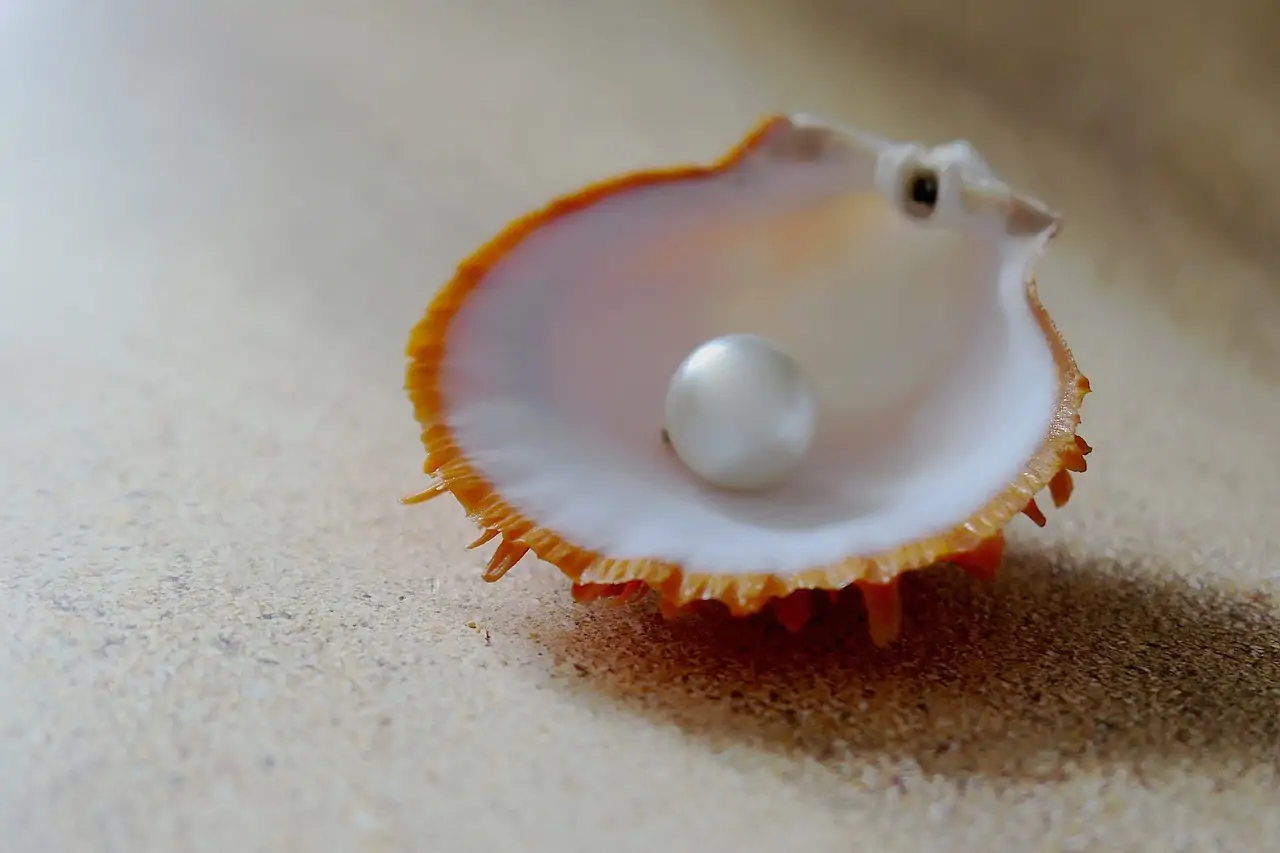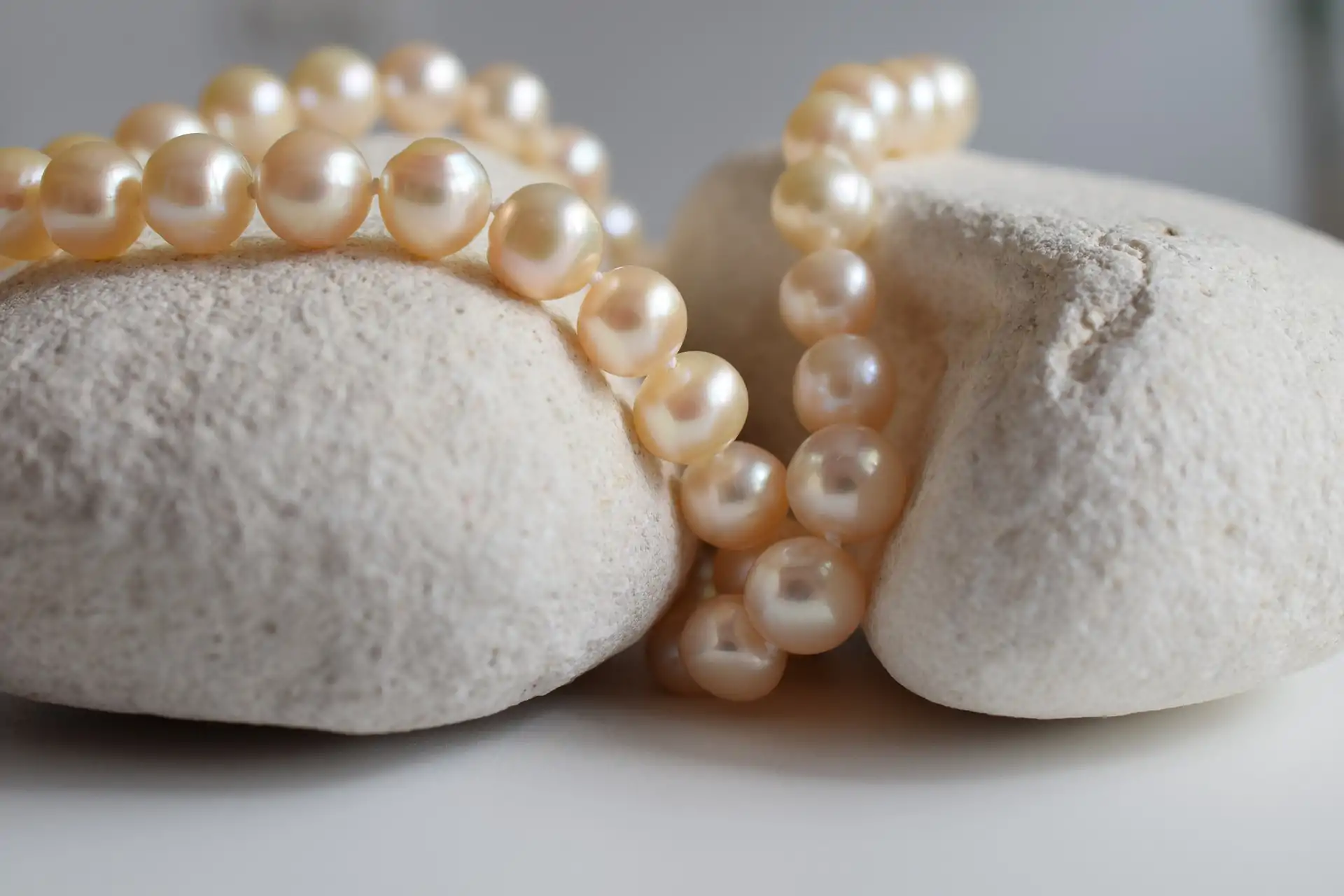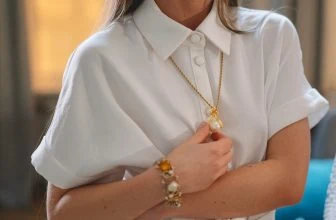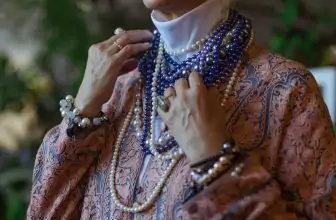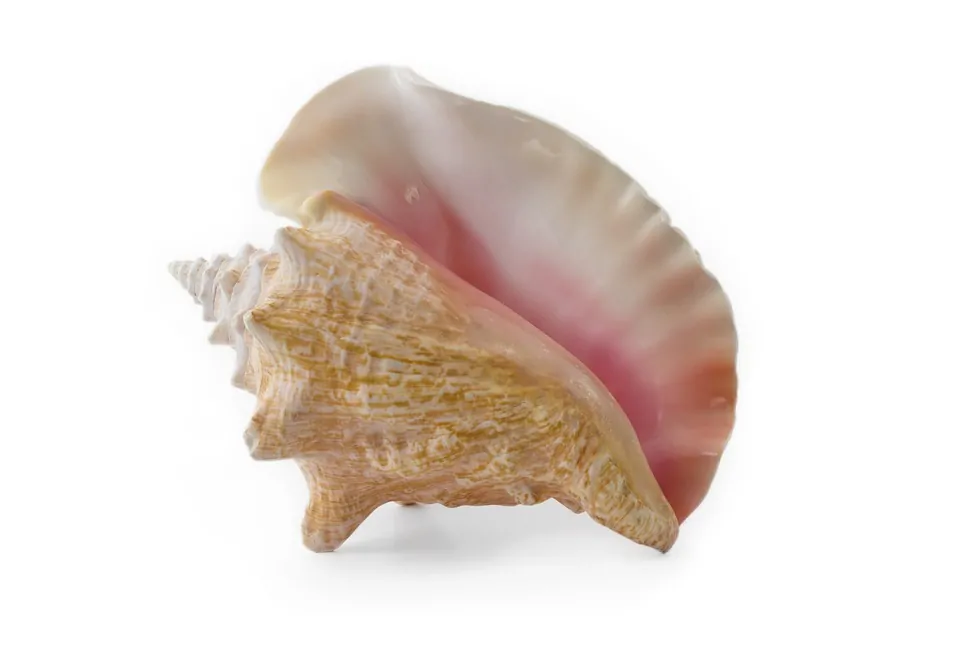
Table of Contents
We all know about conch (pronounced konk) shells; the beautifully formed majestic looking shells with a pink, lustrous interior. These shells represent the sea and have always been a collector’s item. But what many people don’t know is that there is such a thing as conch pearls produced by queen conchs.
These are extremely rare, stunningly beautiful and very valuable.
Conch pearls have been collector’s items for centuries. When set in jewelry, they make for stunning, luxurious pieces.
Intrigued? Keep reading for the 11 facts you need to know about conch pearls before you buy.
Conch shell numbers are dwindling.
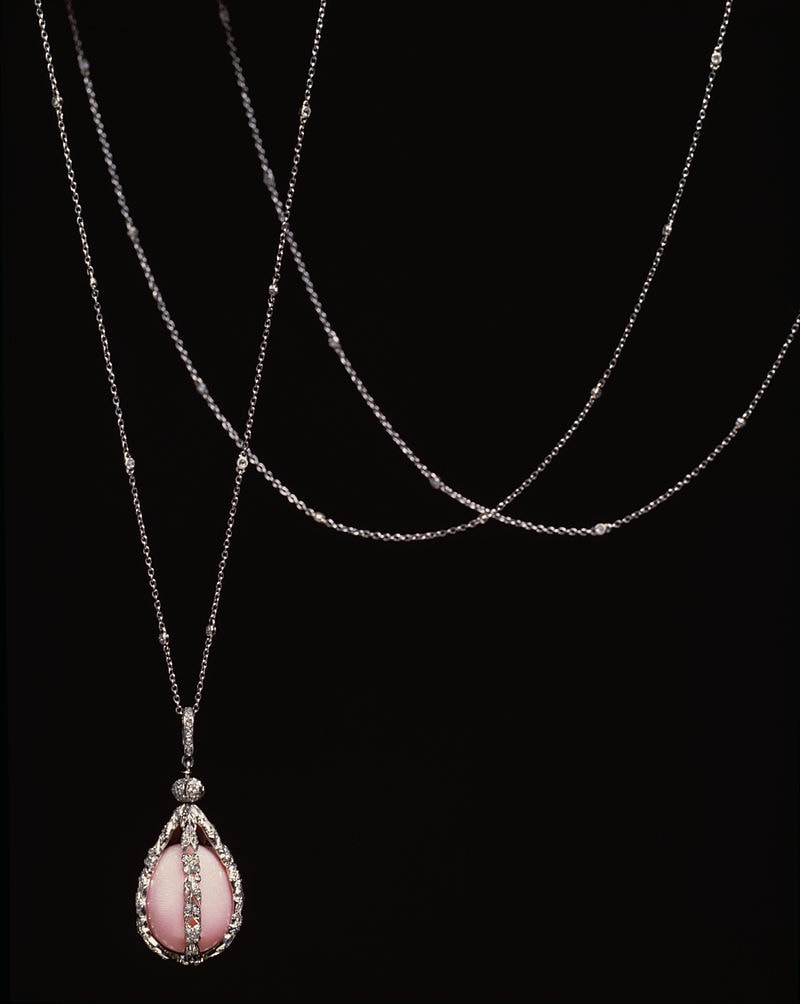
Conch pearls come from the Queen Conch snail, also known as strombus gigas. Most conch pearls come from the Caribbean and are formed naturally. Unfortunately, due to overfishing and harvesting of conch shells, the animal is now a threatened species. In Florida, it’s not illegal to fish for conch shells and in other parts of the world steps are being taken to protect this creature.
Culturing conch pearls is a challenge.

Scientist have tried to culture the conch pearl but with limited success. This is partly because conch snails are well-hidden within the curves of the shell, so getting to them for the culturing process and extracting the pearl is very difficult. What’s more, these animals are haemophiliac and will likely bleed to death before the process is over.
Scientists are still working on conch pearl cultivation and there may be inroads in the future. For now, all conch pearls on the market are naturally formed.
To put that in perspective, almost every single regular pearl on the market has been cultured or farmed in some way.
This makes conch pearls extra special. Unlike pearls, diamonds or moissanite, science still hasn’t conquered the Queen Conch.
Conch pearls are quintessentially pink.
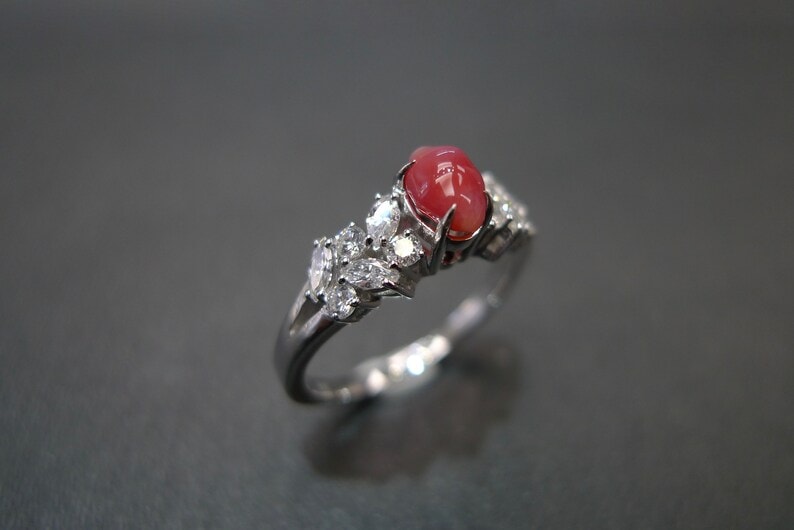
The color of the conch pearl is what makes this pearl variety so immediately distinguishable. The most valuable color is pink, with shades varying from peachy salmon varieties to pink. There are also brown and yellow varieties, but these aren’t common.
Some trade names for conch pearl pink colors are sakura pink, flamingo pink and salmon pink. Choose the color that appeals to you, as there’s no consensus on which pink is the best.
However, in general, the pinkest pearls are the most sought after.
This video shows stunning rare conch pearl set in an 18k white gold ring setting.
Conch shells aren’t typically round.
Conch pearls come in a variety of shapes and aren’t always perfectly spherical. The shape is important in that it’ll determine the type of jewelry the pearl can be made into.
The rounder pearls have always been more valuable, especially because they’re extremely rare thanks to the conch shells’ unique shape. The most common shapes for conch pearls are oval and baroque.
Conch pearls are measured in carats.
Other pearls are sold in millimeters but conch pearls are sold in carats. This is another nod to how rare and prized the pearl is. Only precious stones like diamonds are sold in carats (which refers to the weight of the gemstone not the size of it).
The conch pearl flame structure is crucial.
Wait, what? What’s a flame structure? Unlike other pearls, conch pearls are not made of nacre. Instead, they’re formed from layer upon layer of fibrous calcium. Because of the way these layers form, a flame like appearance can be seen in high quality conch pearls. The flame structure is one of the most important characteristics of the pearl and really increases the overall value.
Conch pearls have a unique luster.
Unlike traditional pearls, which have an iridescent luster, conch pearls have an almost porcelain, ceramic kind of luster. This is caused by the composition of the pearl and the way in which light interacts with the layers of calcareous concretions.
Conch pearls and traditional pearls are very different.
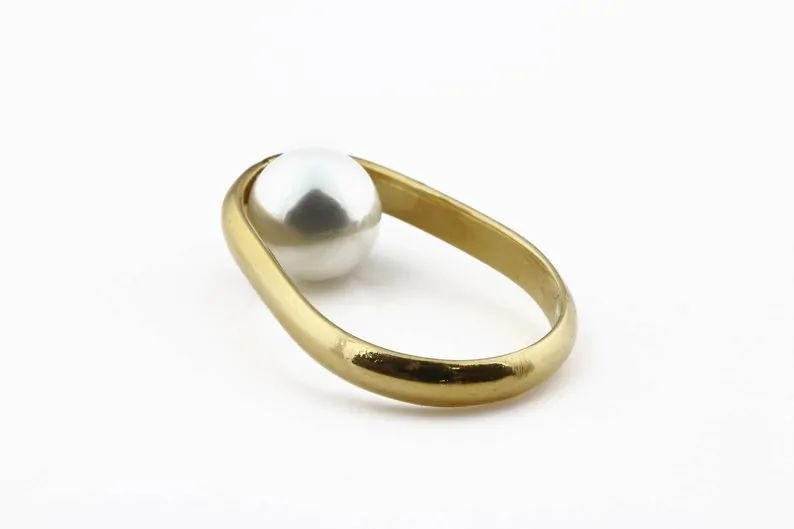
While conch pearls and oyster/mussel pearls both come from molluscs, and are both called pearls, there are many differences between these two varieties. Here are some of the differences:
- Composition: Oyster/mussel pearls are composed of nacre while conch pearls are made of fibrous calcium.
- Weight: Conch pearls are heavier than nacreous pearls and weigh more.
- Measurement: Conch pearls are measured in carats while other pearls are measured in millimeters.
- Rarity: Conch pearls are much rarer than nacreous pearls (more on this below).
- Culturing: While traditional pearls have been successfully cultured and now make most of the market, conch pearls haven’t been cultured for commercial purposes.
- Color: Traditional pearls are typically white or cream-colored while conch pearls are known for their salmon colored hues.
- Durability – Conch pearls are harder, tougher and more durable than nacreous pearls. While a traditional pearl only ranks 2.5 to 4 on the Mohs scale, pink conch pearls rank about 5 to 6. As the Mohs scale isn’t linear, this is a big leap in durability.
- Luster – Conch pearls have a porcelain-like luster which doesn’t easily erode. As we’ve already mentioned, nacreous pearls have an iridescent luster and can easily erode, flake and chip.
- Shape – Traditional pearls are typically baroque in shape, but due the sheer numbers of cultivated pearls, finding perfectly spherical pearls isn’t difficult. In fact, it’s the norm. Conch pearls, on the other hand, are typically oval, and round pearls are extremely rare.
Conch pearls are extremely rare.
Only 1 in every 10,000 to 15,000 conch shells will produce a pearl, making conch pearls among the rarest of pearl varieties. Of these, only about 10% will be of gem quality.
High quality conch pearls with their distinguishing pink color can command eye-watering prices, with a carat costing about $15,000 – $20,000. This is on par with the very best diamonds. However, you can also find good pearls around the $5000 mark per carat while average quality conch pearls can retail for around $2000.
You really have to think of conch pearls as valuable as a blue diamond or a color-changing alexandrite.
Conch pearl jewelry is prestigious.
Conch pearls have been used in jewelry for centuries but were especially popular during Victorian times. They were perfect for cameos, carvings and other elaborate jewelry of the time.
These pearls were also popular during the Edwardian era and were incorporated into Art Deco jewelry as well. However, after this, conch pearls faded in popularity and went out of style.
These gemstones became popular again in the 80s onwards and this has continued. Today, conch pearls make for excellent collector’s items, investment gemstones and beautiful jewelry.
Conch pearls are an elite gemstone.
While we can all agree that these gemstones are stunning and very unique, not all of us can afford to buy conch pearls. These pearls are for a certain kind of shopper who understands their value, sees them as the best of the best and wants a part of that prestige. While other pearls come in their thousands, these pearls are the rarest and are literally, only a drop in the ocean of pearls.
If you want to know, here’s an excellent video that covers the story of conch pearls. It really highlights the value of this stunning gemstone and is definitely worth a watch!
If you’re thinking about adding one of these special pearls to your collection, purchase from a reputable retailer to know that you’re getting the real deal. Also, always ask for a certificate of authenticity. If the price is too good to be true, it probably is.


